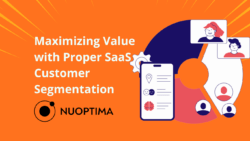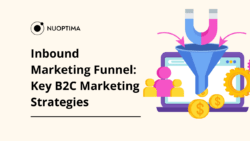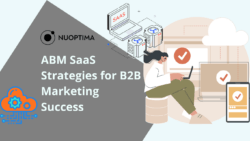Navigating the turbulent waters of B2B SaaS startup marketing can feel daunting, especially when you’re a fledgling business with big aspirations. Unlike casting a wide net for individual consumers, here you’re crafting a precise pitch aimed at fellow businesses and organisations. Why does this matter so much for startups?
In the bustling SaaS landscape, marketing isn’t just about visibility – it’s your ticket to sustainable growth. It’s the bridge connecting your innovative solutions to businesses that genuinely need them. A stellar promotion approach can set your startup apart in a crowded market, amplify your brand’s voice, and drive crucial revenue. So, if you’re keen on crafting a B2B SaaS startup marketing strategy that truly resonates, you’re in the right place. We are a specialist B2B SaaS SEO agency, so let’s journey together through the essentials.
When it comes to scaling your efforts, leveraging pay-per-click (PPC) strategies specifically designed for SaaS companies can be a game changer. Partnering with a dedicated SaaS PPC agency ensures that your campaigns are tailored to target the right audiences while maximizing your return on investment.
As a B2B SaaS startup, you will likely be looking to raise capital. Before we get into the nitty gritty of B2B SaaS startup marketing, why not check out this YouTube video from our Founder, Alexej Pikovsky, who shares 10 negotiation strategies that he has personally used to efficiently raise capital on opportune terms.
What Makes B2B SaaS Startup Marketing Unique?
Marketing a B2B SaaS startup presents several challenges compared to other established brands. Here are the main hurdles to be aware of:
Limited resources and budgets – Startups in this space often have limited resources at their disposal, meaning they need to be strategic and creative in their marketing efforts.
Complex B2B SaaS products – New software typically requires significant education and explanation to potential customers. This means that startups need to invest in educational content to help their target audience understand the value of their product.
Longer sales cycle – B2B SaaS startups often have longer sales cycles and must build trust with potential customers before closing a deal. Therefore, businesses must focus on building relationships through personalised outreach and thought leadership content.
Higher churn rate – SaaS companies will find that churn is a real issue when marketing their solution. Since SaaS isn’t a one-time purchase, it’s essential to implement retention strategies to keep subscribers engaged throughout their time with you.
Changing market trends – B2B SaaS startups need to be agile and adaptable as the market evolves rapidly, and they need to be able to pivot their strategies quickly to stay ahead of the competition.
How to Market a B2B SaaS Startup?
Promoting a startup in the B2B SaaS space requires more than a few well-positioned ads. Instead, preparation work ensures you’ve got a clear startup B2B SaaS marketing plan. By implementing a well-planned strategy, startups present themselves as industry leaders and will be better positioned to attract customers needing their solutions. So, let’s explore how to market a B2B SaaS startup.
Understand Your Target Audience
Understanding your target audience is one of the first steps in B2B SaaS startup marketing. You must identify your ideal customers and conduct market research into their needs, pain points, and preferences.
Start by analysing your existing customer base if you have one. Look for common characteristics among your customers, such as industry, company size, job title, and location. This will help you create buyer personas, which are fictional representations of your ideal customers.
Alternative ways to carry out market research are through surveys, interviews, and analysing industry reports. By gathering data on your audience’s preferences, challenges, and buying behaviours, you can tailor your marketing messages and strategies to resonate with them.
Nailing this stage is fundamental for startups in the SaaS space. When you get this right, you’ll find it easier to craft relevant content and target specific consumers looking for your product.
Creating a Strong Brand Identity
A strong brand identity is crucial for B2B SaaS startups as it helps differentiate them from competitors and build trust with potential customers. A brand identity encompasses the visual elements, messaging, and values that define the company.
To develop a branding approach, start by defining your mission, vision, and values. It’s essential to get very clear on what your brand stands for, as this will guide your marketing efforts and help you communicate your unique selling proposition. Incorporating b2b content marketing services into your strategy can further enhance your messaging and ensure consistency across all platforms. Next, create a brand voice and messaging that aligns with your target audience’s preferences. You’ll want to consider the tone and style of your communication, as well as the key messages you want to convey.
Next, create a brand voice and messaging that aligns with your target audience’s preferences. You’ll want to consider the tone and style of your communication, as well as the key messages you want to convey.
Remember, a consistent brand identity is crucial. All your marketing materials and communications should reflect your brand’s voice. Therefore, when your ideal client sees the content you’ve posted, they recognise it’s you, strengthening rapport and trust.
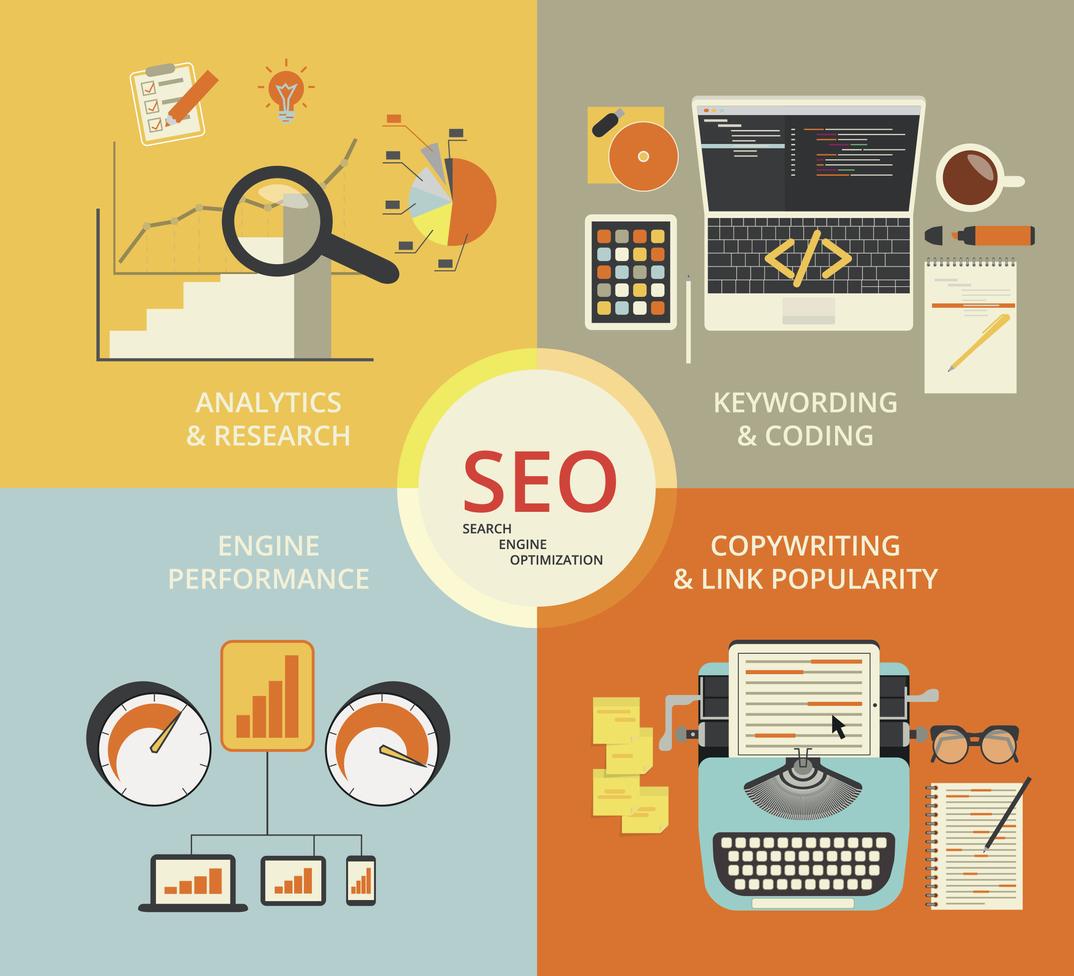
Developing a Solution-Focused Content Marketing Strategy
Partnering with a SaaS content marketing agency is the best way to educate prospects and position your B2B SaaS startup as an authoritative source. Each blog post facilitated by the agency is a chance to educate and engage with your leads while demonstrating your expertise.
If you’re looking for expert help in executing a robust email marketing strategy specifically designed for SaaS businesses, check out our dedicated SaaS email marketing services.
To create a content plan, first, you need to identify topics and themes relevant to your audience. You can do this by conducting keyword research, analysing industry trends, and listening to your customers’ feedback. Once you have a list of topics, create a content calendar to plan and organise your creation efforts. Effective content isn’t just about what you say but also how you say it. For those looking to elevate their messaging, partnering with a SaaS copywriting agency can ensure your content not only informs but also persuades, helping you achieve your business goals.
When it comes to the types of content to create, consider a mix of formats such as:
- Blog posts,
- Whitepapers,
- Case studies,
- Videos,
- Webinars.
Each format serves a different purpose and appeals to various types of buyers. Therefore, by diversifying your content, you’re making your services more accessible, and you can reach qualified leads at numerous stages of the SaaS customer journey. In short, publishing valuable and informative content on your website can attract and nurture leads, ultimately driving conversions and sales.
Choose the Best Channels For B2B SaaS Startup Marketing
Choosing appropriate marketing channels is crucial for B2B SaaS startups as it determines how effectively they can reach their target audience. Various marketing channels are available, both online and offline, and each has its strengths and weaknesses.
Online Channels
Online channels include search engine optimisation (SEO), social media, email campaigns, content creation, SaaS affiliate marketing, and paid advertising.
| Strengths | Weaknesses |
| 1. Scalability: Can reach a global audience easily. | 1. Saturation: Digital space is crowded, making it harder to stand out. |
| 2. Measurability: Easy to track and analyse metrics using tools like Google Analytics. | 2. Short-lived Attention: Digital ads/content can be easily ignored or forgotten. |
| 3. Flexibility: Quick to adjust or pivot strategies based on real-time feedback. | 3. Costs: PPC campaigns, especially on competitive keywords, can be expensive. |
| 4. Targeting: Ability to precisely target demographics, job roles, industries, etc. | 4. Ad-blockers: Many users employ ad-blockers, reducing the visibility of online ads. |
| 5. Interactivity: Engage audiences with interactive content, webinars, live chats, etc. | 5. Dependency on Platforms: Relying heavily on platforms like Google or Facebook poses risks. |
| 6. Cost-Effective: Especially with organic strategies like SEO for startups or content creation. | 6. Algorithm Changes: Can affect visibility and reach unexpectedly. |
Offline Channels
Offline channels include events, conferences, trade shows, and direct mail.
| Strengths | Weaknesses |
| 1. Tangibility: Physical materials like brochures can have a lasting impression. | 1. Less Measurable: Harder to track ROI precisely compared to digital channels. |
| 2. Trustworthiness: Some audiences still value traditional methods and find them more credible. | 2. Higher Costs: Printing, event sponsorships, etc., can be expensive. |
| 3. Face-to-face Networking: Trade shows and events offer direct personal interactions. | 3. Less Flexible: Mistakes in printed materials can’t be corrected without additional costs. |
| 4. Local Reach: Great for targeting local businesses or niche industries. | 4. Scalability Issues: Difficult to reach a broad or global audience quickly. |
| 5. Less Competition: Fewer B2B SaaS startups might opt for offline, creating opportunities. | 5. Time-Consuming: Organising events or creating physical materials can be lengthy. |
| 6. Sensory Engagement: Interacting with physical materials can engage more senses than digital. | 6. Eco Concerns: Over-reliance on print can be seen as less environmentally friendly. |
To choose the best channels for your startup, consider your target audience’s preferences and behaviours. For example, if your ideal client is active on social media, investing in this growth channel may be a good choice, allowing you to engage with them directly. On the other hand, if they prefer in-person interactions, attending industry events and conferences may be more effective.
LinkedIn is an excellent example of an effective marketing channel for B2B SaaS startups. The popular platform for professionals allows for targeted advertising and industry-specific publications and best B2B SaaS websites, helping you reach a niche audience.
Make Product Trials Accessible and Seamless
Product trials are a critical part of the B2B SaaS sales process as they allow qualified leads to experience the value of your product before making a purchase. Startups must get their audience to use their product as soon as possible. Not only does it demonstrate the benefits of your offer, but it also lowers the perceived risk of investment.
That said, for free trials to succeed, you must make them accessible and seamless to convert trial users into paying customers.
For instance, to make product trials effortless for potential subscribers, ensure the sign-up process is straightforward. To this end, avoid asking for too much information upfront and provide clear instructions on how to get started. This initial onboarding experience must also meet their expectations and eliminate any doubts they have about your software. To further improve the free trial, prioritise excellent customer support and publish regular resources to help trial users get the most out of their experience.
You may consider the following:
- Product tour,
- How-to videos,
- Tips on how to use the product and make the most of it,
- Live chat feature.
Measuring the success of product trials can be done by tracking key metrics such as trial-to-paid SaaS conversion rate, trial length, and user engagement during the trial period. This data can help you identify areas for improvement and optimise your trial process.
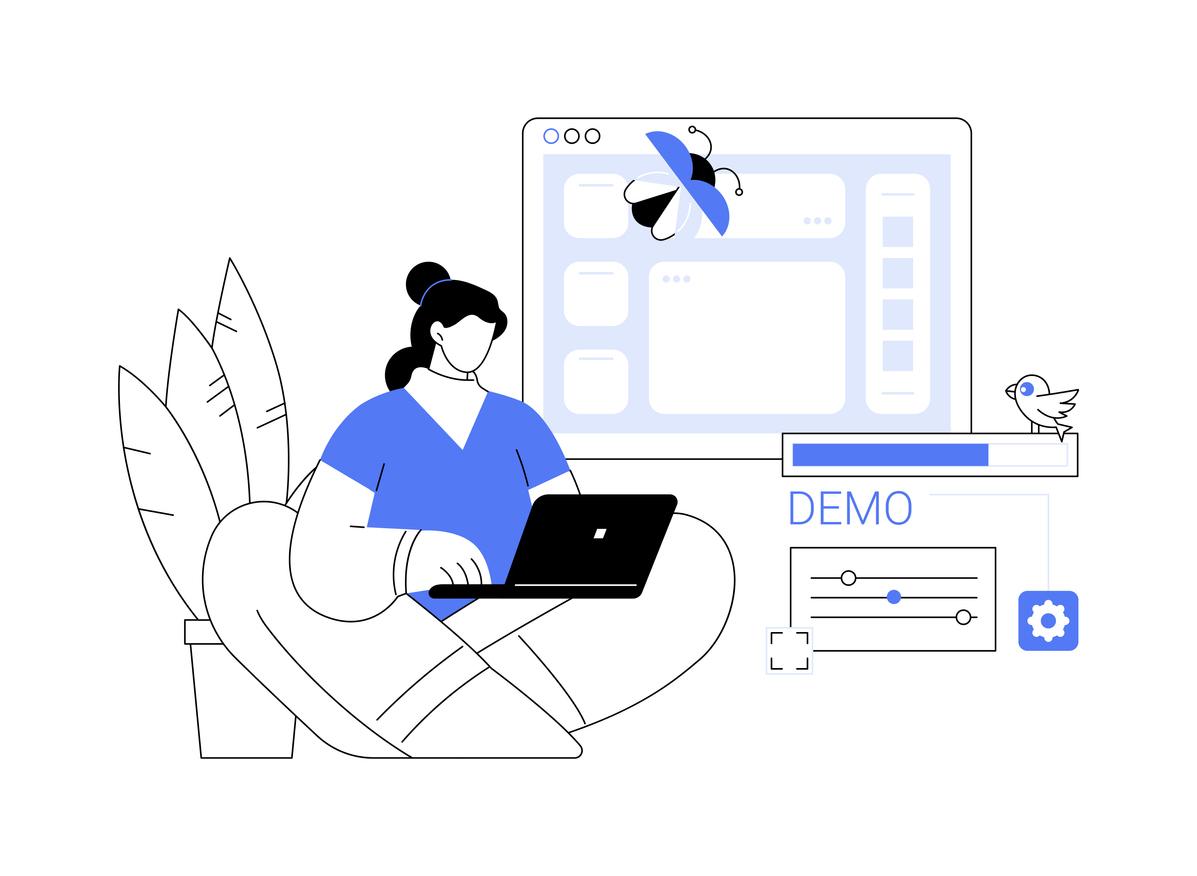
Creating Effective Landing Pages
Landing pages are a vital component of B2B SaaS startup marketing as they are designed to capture leads and drive conversions. To create a compelling sales page, start by defining a clear goal, such as encouraging visitors to start a free trial, downloading a whitepaper, or requesting a demo. Once you have a plan in mind, design it around a specific pain point that your target audience has. This page should offer a clear solution and guide them to a call-to-action (CTA) that prompts visitors to take the desired action.
Elements of a successful landing page include:
- Compelling headline,
- Concise and persuasive copy,
- Visually appealing design,
- Social proof in the form of testimonials or case studies.
Furthermore, optimise the page for mobile devices and ensure it loads quickly to provide a seamless user experience. A functional, well-designed landing page can significantly increase your conversion rates and help you generate more qualified leads.
Incentivise Product Referrals
Referrals are a powerful tool for B2B SaaS startups, as they can drive high-quality customer acquisition. When a business or individual recommends your product or service to their network, it signals a display of trust in your offer. Other prospects will regard this highlight and see you as an authority in your niche. Therefore, by incentivising product referrals, you can encourage existing customers to refer your product to their connections, ultimately expanding your customer base to people with similar interests.
To create a referral program, start by defining the incentive when an existing subscriber refers to a new customer. They may benefit from a discount on their next purchase, a cash reward, or access to exclusive features or content. Make sure the reward aligns with your customer’s needs.
Measuring and Analysing Marketing Metrics
For startups, understanding B2B SaaS metrics isn’t just useful – it’s essential. These numbers, when interpreted right, become your guide to refining and smashing your goals.
Let’s delve a bit deeper into how to use each metric:
-
Website Traffic: Think of this as the digital footfall of your online store. Monitoring spikes or drops can give insights into the effectiveness of marketing campaigns or the appeal of new content. But remember quality over quantity. It’s not just about getting visitors; it’s about attracting the right kind.
-
Conversion Rate: This is where quantity meets quality. It tells you how many website visitors are taking the desired action, like signing up for a trial. A low rate? You might need to rethink your website’s design, calls-to-action, or the clarity of your offering.
-
Churn Rate: While acquiring new customers is brilliant, retaining them is equally crucial. A high churn rate (customers leaving your service) could indicate dissatisfaction. Are there frequent bugs? Is your customer service up to scratch? Dig deep and find out!
-
Customer Acquisition Cost (CAC): Every customer has a price, the cost you incur to acquire them. If this is too high, it’s time to reassess your advertising spend, sales process, or even the platforms you’re targeting.
-
Customer Lifetime Value (CLTV): This metric tells you the net profit from a customer throughout your relationship. If your CLTV is significantly higher than your CAC, give yourself a pat on the back! It means you’re extracting good value from your promotion efforts.
-
Return on Investment (ROI): Arguably the king of all metrics. For every pound you put into marketing, how much are you getting back? A positive SaaS ROI means your campaign is working, but always strive to push this number higher. Evaluate the strategies that work and optimise those that don’t.
Tools like Google Analytics are great for a deep dive into traffic and user behaviour, but you should also review other platforms, such as marketing automation software. In this case, they provide insights into email campaign performance, letting you fine-tune your messaging and pinpoint exactly what tickles your audience’s fancy.
So, take a moment, pull up these metrics, and let them illuminate the path to a well-optimised, data-driven strategy.
Avoiding Common B2B SaaS Marketing Mistakes
There are several common marketing mistakes that B2B SaaS startups should avoid to ensure the success of their promotion efforts. These mistakes can hinder the growth and profitability of a startup and should be addressed proactively. Let’s shine a light on these so you can sidestep them gracefully.
First up, knowing your audience. It might sound obvious, but you’d be surprised how many skip this step. Imagine throwing a dart blindfolded and hoping to hit the bullseye. That’s what you do if you’re not tuning into your audience’s needs, hurdles, and desires. Dive deep into market research, craft those detailed buyer personas, and ensure your marketing messages hit the mark.
Then there’s the ever-so-crucial tracking of metrics. Not doing this is like baking without a recipe and hoping for the best. By overlooking metrics, you’re flying blind, missing out on those essential indicators that show if you’re on the path to glory or going off a tangent. Set up your trackers, review that data, and refine as you go.
Finally, let’s not forget the unintentional slip-ups like targeting the wrong crowd. It’s a surefire way to drain resources while scratching your head, wondering why conversion rates are low or the oversight of customer retention. It’s heartbreaking to see hard-won customers just slip away because of a lapse in focus.
Scaling Your B2B SaaS Marketing Efforts
Scaling your marketing efforts is crucial for B2B SaaS startups as it allows them to reach a larger audience and drive more revenue. However, scaling can be challenging and requires careful planning and execution.
To scale your efforts, start by setting clear goals and objectives. This will help you prioritise your advertising activities and allocate resources effectively. Additionally, invest in marketing automation tools and technologies to streamline your processes and increase efficiency.
The following tactics can help scale your marketing efforts and widen your pool of ready-to-buy leads:
- Expanding into new markets or industries,
- Increasing your advertising budget, potentially through collaboration with a specialized SaaS PPC Agency,
- Leveraging SaaS partnership strategies or collaborations with other businesses.
Conclusion and Next Steps for B2B SaaS Startup Marketing Success
Embarking on a journey through B2B SaaS startup marketing is essential to carve a niche in today’s competitive landscape. While understanding your audience and refining your strategies is vital, it’s the continuous evolution and responsiveness to industry changes that truly distinguish successful brands. Don’t just focus on the present; stay informed about future trends, innovate, and, most importantly, remain resilient.
If you want to optimise your marketing efforts and position your startup as a market leader, don’t venture alone. The NUOPTIMA team is on standby, equipped with insights and expertise tailored to your needs. Book a free call with us today, and let’s craft a winning strategy together.
FAQ
B2B SaaS startups deliver software solutions specifically designed for business clients. These startups often provide tools or platforms that address business challenges or optimise processes, and they typically charge clients through a subscription-based model.
To grow a B2B SaaS business, it’s crucial to ensure your software meets a tangible business need. Regularly gather and implement customer feedback, produce relevant content that addresses your target audience’s challenges, and introduce referral programs. Offering free trials or freemium models can attract potential customers but ensure you create a seamless onboarding experience to convert them into paying subscribers.
A B2B SaaS marketing team should have a Chief Marketing Officer (CMO) overseeing strategic direction. Under the CMO, there would be teams or individuals focused on content creation, demand generation (including acquisition strategies like PPC, SEO, and email campaigns), SaaS product marketing, and social media engagement. However, startups may benefit from a SaaS startup marketing agency to support them in entering the market and scaling operations.

